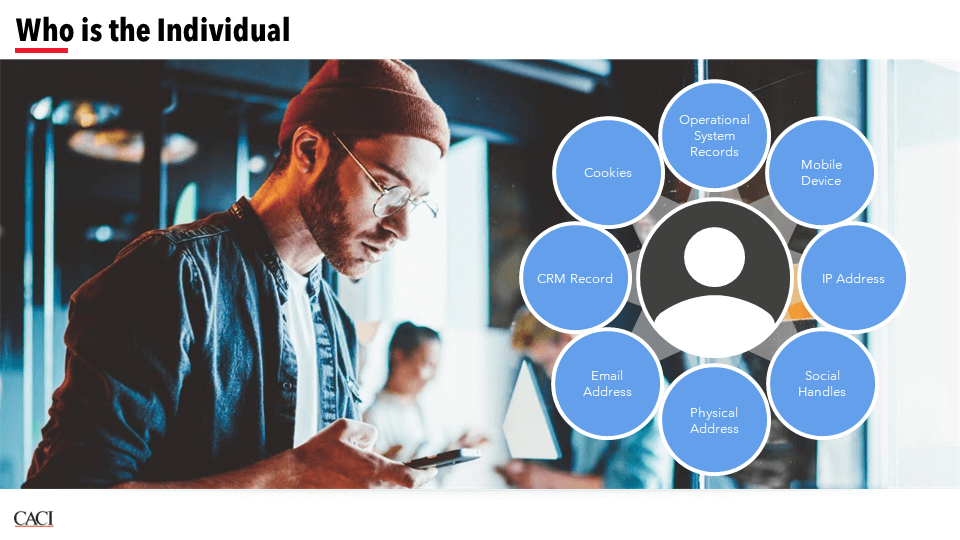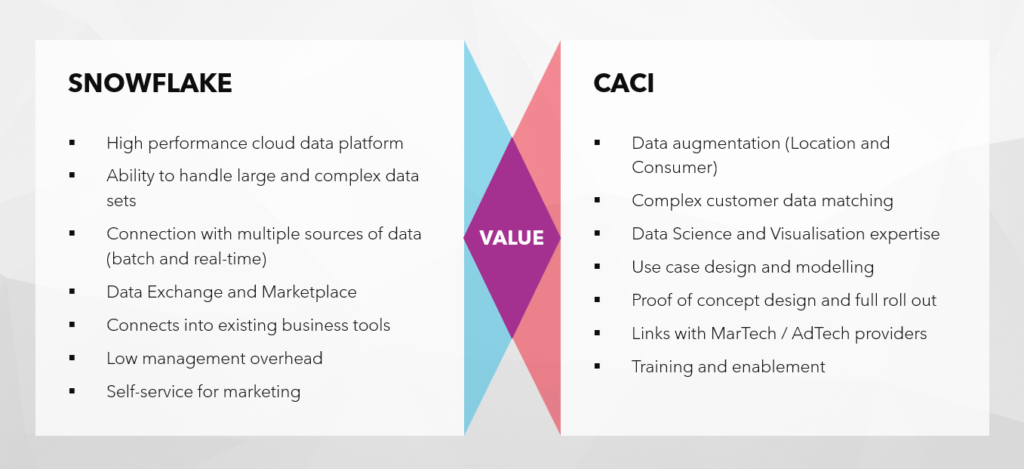
Capability: Marketing Technology & Architecture


CACI is an Adobe partner with experience of implementing, optimising and running Adobe’s Experience Cloud for our clients. We’ve been following the developments in Adobe’s product development and will be sharing our insights here. In this post, David Moore shares his view of the integration between Adobe Workfront and the new version of Adobe Campaign.
Watching the introduction to Adobe Campaign Classic 8 in this year’s Adobe Summit I was taken by JJ Haglund’s top 10 innovations. Sitting at number 10 was the “close integration with Adobe Workfront”, a product Adobe acquired in 2020. It sparked an immediate interest. Why? Let’s go on a journey.
Marketing is no longer the free for all it was. You can no longer sell Snake Oil and get away with it (apart from hi-fi industry see footnote *). Especially in the UK, marketing is now closely regulated and in certain verticals such as financial services, energy, telecoms there are external bodies who have the authority to audit a company’s marketing and apply fines if they find inappropriate marketing practices.
As such for any marketing campaign, organisations in these sectors, must have an audit trail for a campaign including the assets that makes up that campaign and the audiences selected to receive the campaign. For example, in the retail finance sector the principles of the Financial Conduct Authority (FCA) include explicit and implicit guidance on the fair treatment of customers. This fair treatment defines six consumer outcomes that firms should strive to achieve. Three of these are: –
- Products and services marketed and sold in the retail market are designed to meet the needs of identified consumer groups and are targeted accordingly.
- Consumers are provided with clear information and are kept appropriately informed before, during and after the point of sale.
- Where consumers receive advice, the advice is suitable and takes account of their circumstances.
So, the selection criteria for customers to be included in an email, SMS, DM, outbound or push marketing campaign needs to include a justification for the selection of the audience, including sign-off, to be recorded for audit purposes.
Also, all the assets chosen for a campaign such as the images and copy need to go through an audited approval process, passing through both the marketing management and legal teams to ensure that customers are being treated fairly. Every sign-off needs to be recorded in case the FCA come knocking and pick on some campaigns to audit. Also, we must remember that a campaign is not just email/SMS/push/DM, but also billboards, TV, YouTube, social media, radio, off the page. All the assets making up the overall campaign, across all distribution channels, need to go through the same process.
So, I’m really excited about Adobe Workfront integration into Adobe Campaign. For our regulated customers (and regulation across the marketing industry is only set to increase) Adobe Campaign and Adobe Workfront looks like a real winner. I’d certainly have ranked it higher than 10. And if you also have Adobe Experience Manager then Workfront integrates with that as well ensuring all assets have been built, reviewed, and tagged appropriately.
An interesting story. I was involved in a pitch to a large regional financial services organisation. We were invited to pitch the two best marcomms tools (Adobe Campaign and Unica) at the time, our presentation was to cover both the campaign management and asset audit management capabilities of the tools. At the time Adobe excelled in Campaign Management but was flawed in Asset Management, Unica was also good in Campaign Management (though poor in delivery integration) and we thought was OK in Asset Management but not a class leader. Which won?
Neither. Unica came close but could not handle radio, TV and social media assets. The company went purely with an audit asset management tool and to my knowledge have still to buy a campaign management tool.
(* cables that are directional: Really?)
If you are considering what the announcements from Adobe Summit mean for your business, please get in touch and we can arrange an initial consultation to help.

Minimise risks and maximise ROI with our best practice round-up
Campaign delivery is critical to your organisation’s competitiveness and growth. In challenging and volatile market conditions, being able to monitor and adapt campaigns in real time to meet changing customer wants and needs is a core skill for successful marketing.
It’s no surprise that many businesses are looking to invest in improved campaign management platforms. Technology has evolved rapidly in the past few years: exploiting new and sophisticated multi-channel, high volume solutions for customer retention, development and acquisition is a priority for marketing and customer experience leaders.

Choosing a campaigning platform with the features and headroom your organisation needs is just the start. The ROI and competitive advantage you stand to gain will only be as good as the migration process.
Many organisations find campaign migration more challenging than they expect. Our expert team has five top tips to help you avoid common pitfalls and tackle your platform migration project with the same rigour as your platform selection business case:
- Include the migration project in your business case to ensure that you can afford to deploy effectively and rapidly. A great campaign platform can make all the difference to customer experience, engagement and ultimately the sales bottom line. It’s a big investment and you’ll have looked carefully to find the best fit for your needs and to calculate ROI. But migrating to a new platform is not just as simple as turning off campaigns in one platform and turning them on in the new one.
- You’ll need strong methodology and project management to define the order of campaigns that need to be migrated and prioritise those that are business critical before moving on to the others. You’re dealing with high volumes of campaigns and data, and you need to build in IP warming and parallel running of old and new platforms during this phase. Planning ahead is crucial.
- Review existing campaigns being sent out and evaluate whether they could be improved and optimised. It clearly makes sense to do this as part of the migration, rather than doing a direct lift and shift. Many organisations struggle to do it in practice because of resource constraints. Your team needs to maintain business as usual during the migration. If you can access additional resources or third-party support, your team can provide focused input to campaign improvement work through workshops, while the migration project team manages and delivers the actions.
- Training is key to ensure a smooth transition and quick adoption of a new platform. Your team may need to adopt new processes and learn new skills. It’s important that they are confident using all the features and capabilities of the new solution if you’re to achieve maximum impact and hit your ROI goals. Build user confidence and avoid stress by providing formal training and making responsive, expert support available to answer questions and resolve issues once the platform is live.
- Access specialist and dedicated resource to make it happen as quickly as possible and without interruption. In most organisations, everyone’s working to capacity, so finding extra time and resource to manage a major migration project is difficult. It’s not realistic to expect your team to handle it on top of business as usual. Exploit the experience of platform migration specialists: their proven methodology and expertise is worth paying for to avoid the risk of delays or campaign interruptions undermining the value and impact of your campaign platform investment.
If you’d like to keep your campaigns flowing and hit the ground running with your new campaign platform, get your free copy of The CACI three-step guide to successful campaign migration. In it, our specialist Campaign Operations team shares insights from our proven process, to help you plan an effective transition.
With long experience supporting leading organisations through efficient and low-risk campaign migration projects, we can shoulder the burden of planning and managing an optimised transition to your new platform, to achieve rapid value from your investment. Talk to us if you’d like to find out how we can help.

Get your PII data under control to help mitigate the risk of reputational damage and financial penalties.
Organisations need to be able to demonstrate that they know where all the Personally Identifiable Information (PII) they hold is located and how it’s linked to specific individuals. If you work in a highly regulated sector, the demands and penalties here will be particularly stringent. Obligations may vary by territory, and even between US states. In the UK and Europe, GDPR regulations apply to any data controller.
Identity resolution is a key discipline for responsible organisations who collect data from more than one source about individuals who engage with them or provide personal information of any kind. It means being able to gather all PII data from across a range of systems about an individual. A consistent identity resolution process is the only way you can be sure that you are delivering marketing experiences and engagement in a responsible and compliant manner.
YOU NEED A FULL REVIEW OF DATA IN YOUR DIVERSE SYSTEMS, SOFTWARE AND TOOLS
Compliance is made harder because even if you use the latest digital campaign delivery platforms, you’ll likely have a number of legacy systems, a diverse estate of software and some cloud-based tools in the mix. Somehow, you have to resolve identities across all of these.
The first step is to assess the risk – you need to examine all the data you hold across the organisation and make sense of it. This is a challenge, because your data will be fragmented and the quality will vary. You’ll need a thorough and systematic approach that takes in finance, CRM and e-commerce systems, to address:
- Accurate data capture and storage
- Duplication of data and customer records
- Data validity and standardisation
- Maintenance of data and recency of updates
- Data understanding
With a complete and accurate assessment of the quality and completeness of your data, you can look to improve your data collection, storage and identity resolution processes to avoid non-compliance in the future.
Tackling identity resolution for data compliance across your organisation is a daunting task. CACI’s experts have developed the ResolvID application to help customers with complex data and system estates to manage identity resolution reliably.
ResolvID can bring together data from multiple sources, standardise and cleanse it then report on it to reveal issues that need tackling. It’s ideal for managing compliance risk and mitigating against fines and reputational damage. It also provides the consistent, unified customer data you need to deliver successful personalisation and differentiated customer experiences, for revenue and customer growth.
If you’d like to find out more about harnessing ResolvID to assess and tackle your compliance issues, get in touch with our specialist data team.

HOW IDENTITY RESOLUTION ENABLES ADVANCED PERSONALISATION IN BIG DATA ENVIRONMENTS
Most organisations have plenty of data. The issue is not how much you have, it’s what you can do with it. You may be sitting on a goldmine of data insight, but you can’t use it to refine personalised communications and marketing unless you can connect it with the digital platforms and tools that will deliver the personalisation.
Tackling this challenge is key to success in a world where consumers are increasingly intolerant of content and approaches that aren’t directly relevant to them. You need to use all the information you have to create unified identities that can inform personalised customer experiences, if you want to compete effectively.
The problem becomes more acute if you are using a data lake as the primary store of customer data. The concept and architecture of data lakes do not lend themselves to the enforced structure, maintenance and standardised logging that good identity resolution requires. At the opposite end of the spectrum, more traditional data warehouses can lack the structure or ability to capture and use large quantities of digital data which can form the backbone of modern identity resolution. These platforms may also be difficult to integrate with other MarTech and AdTech.
TACKLING IDENTITY RESOLUTION IN DATA LAKES
If you work in a big data environment, you may struggle to identify unique customers. It can be risky to rely on insights developed from data lakes, because they have no enforced structure at the point of data capture. This makes it challenging to define a customer view in a consistent manner, with all data points incorporated.
CACI’s identity resolution application ResolvID has a smart way of tackling this problem. It takes in all potentially identifiable information as it’s loaded into the data lake and continues to iterate and develop the customer picture over time. It adds up small quantities of data from sources including transactions, ClickStream data and geolocation to build the identity of a customer. The structure of the customer is defined within the platform: ResolvId makes its keys available for use within any and all resources.
TACKLING IDENTITY RESOLUTION IN DATA WAREHOUSES
If your organisation uses enterprise or operational data warehouses, it can be difficult to connect the finance, CRM and order data held within them directly with digital customer data platforms (CDPs) that serve web, automated marketing and mobile app content.
CDPs maintain digital identifiers, but they need a single customer identifier to truly connect the business with digital channels. Because of the complex nature of data held in the data warehouse, it can be challenging to resolve to an individual’s identity.
Using ResolvID as a middle layer, you can create a unified identity and identity graph that can work in both environments. It connects the systems to enable rapid deployment, unlocking value in your data for personalised campaigns. You’ll achieve a single view of the customer and can report crucial unified measures such as lifetime value.
Read the previous blog to find out factors to consider in delivering personalised content and marketing that fuel sales and retention in competitive consumer markets. Get in touch if you’d like to discuss identity resolution in your big data environment with one of our campaign data experts.

Your customers and prospects want and expect you to communicate with them as individuals. It’s a very natural human desire – no-one wants to feel like they’re just a data point.
Today’s sophisticated data management and campaign delivery technology makes this possible in theory. But effective personalised communication has become more complex in recent times because of the challenges of identity resolution.
Identity resolution has always been important. It means matching identities across different touchpoints to create a unified profile for every customer. The advent of GDPR intensified the need to use identity resolution to manage data preferences robustly across channels and media, to comply with data protection laws.
But legal compliance is only one reason for the extreme complexity of the identity resolution challenge today. For marketing personalisation and for analytics, you need an accurate view of an individual, so you can always communicate with them in context of who they are and what matters to them.
We need to be able to resolve identities better, faster and more efficiently across a much greater amount of data to keep pace with competitive pressures and market demands.
CONSUMERS ARE UNFORGIVING
Your customers are ever more demanding – they want and expect to know about the right products and services at the right time and to be served content that’s relevant to their current preferences. 63% of customers say they will stop using companies who deliver poor individual marketing, according to data cited by the Forbes CMO network.
DIGITAL BEHAVIOUR IS CONSTANTLY EVOLVING
There’s an ever-growing number of channels enabling consumer engagement with brands. Consumers also have more devices. They use them to graze across a range of channels and media – frequently their interactions are superficial and transient. They no longer adopt a consistent pattern of behaviour, nor do they always log in or identify themselves directly when they view content.
YOU CAN’T RELY ON THIRD PARTY COOKIES
The third-party cookie is on its way out. That makes it harder to connect interactions through online advertising on third party sites. First party data is becoming more important, and it must be accurately resolved with other sources.
SOPHISTICATED TECH CAN OVERREACH YOUR CAPABILITIES
Technology is at hand to help and many vendors are pushing their solutions. These are based on complex data science and may include visualisations, digital reporting platforms and next best action platforms. Many are excellent tools, but you need to bring your data together in a consistent, de-duplicated way before you can obtain value from them.
THERE ARE SHADES OF GREY IN DIGITAL IDENTITIES
In the previous digital era, identity resolution was relatively simple – you either knew or did not know who a person was. But it’s no longer black and white. You can also personalise and understand preferences without knowing exactly who the individual is, learning about them through behaviour and touchpoints.
These factors all create obstacles to delivering the personalised content and marketing that fuel sales and retention in competitive consumer markets.
Organisations need to upweight their data science and marketing analytics expertise to deal with the ever-evolving challenges of identity resolution and get the best value and differentiation from their digital marketing campaign tools and tech.
Increasingly, clients are asking CACI to step in as an expert third party resource to tackle these challenges, using the purpose-build ResolvID solution.
CACI is a frontrunner in identity resolution and has pioneered innovative ways to consolidate customer data since the issue first arose. We started with matching services based on name, surname, address. Today, we have built far beyond that expertise to create ResolvID, a real time API-driven product that learns as it resolves a wide range of different data sets. It can also address digital applications where there may be no first party identifiers, instead using IP addresses and device IDs.
Our next blog will be to find out exactly how identity resolution supports advanced personalisation, compliance and accurate analytics, and why this is crucial for your success in today’s digital marketplace. Or get in touch if you’d like to discuss how we can help you tackle the challenges of identity resolution in your customer data.

CACI and Snowflake hosted a webinar on the benefits of marketers getting involved in Snowflake’s Data Cloud. Whilst real-time data infrastructure may sound like the focus of the techies, this webinar sets out the why and how of playing an active part in your data infrastructure.
I was fortunate as webinar host to be joined by Paul Coward of the RAC and Jon Ede who leads CACI’s Snowflake practice. As Strategy & Insight Director at the RAC, Paul has been heavily involved in their implementation of Snowflake to drive real-time marketing and insight capabilities. Jon has a wealth of experience in building customer and marketing data platforms, and was an early adopter of Snowflake’s technology.
Five takeaways on snowflake’s data cloud
- Failure to engage on data infrastructure may leave marketers with something that is not fit for use.
- Data provides an edge for marketers who are seeking to continually optimise marketing activities.
- Snowflake enables marketers and IT teams to quickly deliver high value insights.
- Optimised marketing comes from a continual cycle of using data to hypothesise, test, measure, learn and improve.
- The frictionless data infrastructure that Snowflake delivers connects all the data in your organisation straight to the customer.
Enabling your marketing data transformation
CACI is here to help marketers do amazing things with data. Whether that’s building a Single Customer View, creating clean data feeds for your marketing technology, or augmenting your customer data with demographics and lifestyle variables. There’s a host of technology, consulting and data science work that we can do to improve your marketing results.
If you’d like to see a recording of the event please get in touch!
We will soon be releasing the CMO’s Playbook for Snowflake, if you’d like to register for a copy of that in advance, please contact me with your details!

As a philosophical question, you probably have a fairly good grasp of the answer when it comes to your own life.
However, the way businesses see us is patchy at best. Duplicated, incomplete, inaccurate data that is spread around systems creates an issue when it comes to generating an accurate profile of who an individual customer is.
When I consider my own data, I use multiple email addresses, have seen my surname spelt multiple ways, and use Dave and David interchangeably. My postal address can be written in endless ways depending on the input form used. It’s messy data.
Businesses will store this data across finance, operational, CRM and sales systems. You may notice this when you phone a call centre and are asked for policy numbers, order tracking codes, or some other identifier. It becomes more transparent that your records are split across systems and teams when that request is followed by “ah, I’ll need to transfer you to another team in that case…”.
It’s not just the data I provide either. Brands are tracking website visits, the content we consume, our social media interactions, and how we use their mobile apps. This tracking information can then be combined with my first-party data. This opens up further insight into my interests and intentions.

For example, if I’ve just purchased a product and start reading the returns policy on the company’s website, it should be obvious that I’m not happy and considering a refund. Brands that can use this data will retain customers, reduce services costs, and ultimately win share of wallet.
For customer focussed brands, Identity Resolution unlocks real benefits:
- Advanced Personalisation: Utilising the full 360-degree view of customer data to serve personalised messaging across channels
- Compliance: Ability to gather all PII data from across systems on the individual and to ensure responsible marketing in regulated industries
- Improved Service: Less “screen switching” during customer interactions and the ability to pre-empt service problems
- Accurate Analytics: Taking account of full customer data set to accurately measure loyalty or predict propensity to take certain action
Failure to get the full picture of who your customer is will lead to issues in making better business decisions that reach a customer. As the old-adage goes, garbage in, garbage out. We can’t expect our marketing to be optimal if it’s only utilising a small percentage of the data available.
To find out more information on Getting Started with Identity Resolution.
If you’d like to find out more about CACI’s real-time ResolvID service for identity resolution, get in touch.

CACI is focussed on doing amazing things with data. For that reason, I’m really pleased to announce that through certifications and client case studies, we’ve achieved an official Select Partnership level with Snowflake.
Our clients have always relied on CACI to combine complex and large data sets to improve their business. Whether we’re bringing together data from across multiple brands and systems to build a 360-degree view of customer data, or analysing anonymous data from the UK’s major banks and lenders, we have expertise that brands can trust.
Snowflake is a cloud-based data platform that is gaining significant traction with CTOs. Snowflake is also one the fastest growing tech companies in the world and recently went public with a $60bn valuation.
Through its unique technology, Snowflake can power critical real-time use cases for CMOs and achieve improved time to value. Jon Ede who leads CACI’s Snowflake practice said:
I’ve built more SCVS and CDPS in my career than I wish to count. A lot of the functionality that a modern platform needs to deliver is out the box with snowflake, allowing for a CMO to cut down on the upfront implementation time and deliver value sooner. As a technologist who has spent most of their career working in marketing, I see immediate benefits of snowflake to a CMO.
CACI AND SNOWFLAKE FOR CMOS
CACI and Snowflake combined bring together a cutting-edge data platform with expertise in delivering customer marketing solutions.

As already demonstrated with our real-time Customer Personalisation Platform architecture that is built on Snowflake, CACI is developing answers for real CMO needs.
CACI has also integrated our identity resolution services into Snowflake, enabling marketers to bring together multiple data sets and, in real-time, combine duplicates. Improving the accuracy of reporting, attribution, and campaign selection.
GET IN TOUCH
Should you need help with your customer and marketing needs, get in touch with me, David Sealey through dsealey@caci.co.uk.
If you’d like to understand more about the data challenges that marketers are facing, I recommend you read our recent article on the challenges of personalised marketing.
